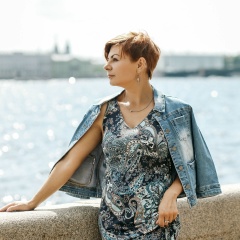Так выглядел Храм Покрова на Нерли :)
Раскопки раскрыли и интереснейшую строительную историю храма.
Место для постройки было, видимо, точно указано князем Андреем. Но здесь в 1165 году была низменная пойма, над которой на три с лишним метра поднималось море весеннего разлива. Мастера не отказались от рискованного княжеского заказа. Они заложили обычный фундамент из булыжного камня глубиной 1,60 м, оперев его подошву на слой тугопластичной юрской глины, обнаружив хорошее понимание строительной геологии. Для большей прочности они ввели внутри ленточные фундаменты, связывавшие фундамент стен и столбов. Далее они возвели в два приема основание стен храма из чисто тесанного камня высотой 3,70 м и дважды обсыпали его снаружи и внутри глинистым супесчаным грунтом, плотно утрамбовывая его. Так вырос искусственный холм, надежно прикрывавший от весеннего разлива лежащие в его массиве основания храма общей глубиной 5,30 м. На этом фундаменте, поднятом над отметкой разлива, и был поставлен храм с его галереями.
Зодчие не ограничились этим — они облицевали поверхность холма белокаменными плитами и проложили такие же, как в Боголюбовском дворце, каменные желоба для отвода осадков (илл. 56). Так холм был одет белокаменным панцирем.
Можно себе представить, каким сверхъестественным чудом казался людям XII века этот храм, не подвижно стоящий над бурными водами разлива на своем каменном острове. Да и сейчас мы отдаем дань любви и уважения художественному дару и смелой инженерной мысли владимирских зодчих. Их труд оправдал себя и их постройка гордо прошла невредимой через восемь столетий, когда каждую из восьмисот весен ее подножие штурмовали пенистые воды двух рек — Нерли и Клязьмы.
Чем же была вызвана постановка церкви Покрова на столь трудном для строителей месте? В этом был свой глубокий смысл.
Устье реки было воротами Суздальской земли и выходом на быстрое течение Клязьмы к Оке и Волге. Мимо храма шли суда из Суздаля и Ростова, корабли послов и гостей из стран Востока, с Волги и Оки. Он не был одиноким. Храм был связан единым замыслом с белокаменным княжеским замком, который был хорошо виден отсюда, и далее — с пышными зданиями самой столицы княжества — Владимира. Собственно, здесь в сознание пришельцев впервые проникала величавая речь архитектуры, созвучная идеям владимирской политики и летописания. Широта архитектурной мысли владимирских зодчих была сродни замыслам великого новгородского мастера Петра, создавшего на подступах к Новгороду на берегах Волхова могучие соборы Антониева и Юрьева монастырей. Возможно, что здесь, у Покрова на Нерли, гости и послы останавливались, поднимались по ступеням белокаменного холма к храму, присутствовали на богослужении, входили на хоры и гульбище и потом плыли в Боголюбов-город и Владимир.
Многосложность идейных задач памятника и определила его царственную красоту и силу. Отсюда его стройность и торжественная ярусность, характерная для многих русских храмов, начиная от киевского Софийского собора, поставленного на месте разгрома печенегов. В Покрове на Нерли эта ступенчатая ярусность особенно выразительна: она начинается с самого белокаменного холма в подножии здания, переходит в арочный ярус галереи, далее на «плечи» основного объема храма и, наконец, в легкий цилиндр барабана, где сильное движение, нараставшее снизу, легко растворяется в шлемовидном покрытии главы с ажурным позолоченным крестом на его острие.
Покров на Нерли является венцом творчества владимирских зодчих середины XII века, подлинных поэтов русской архитектуры.
Воронин Н.Н. Зодчество Северо-Восточной Руси XI–XV веков. М., 1961. Т. 1
http://rusarch.ru/voronin1.htm
Раскопки раскрыли и интереснейшую строительную историю храма.
Место для постройки было, видимо, точно указано князем Андреем. Но здесь в 1165 году была низменная пойма, над которой на три с лишним метра поднималось море весеннего разлива. Мастера не отказались от рискованного княжеского заказа. Они заложили обычный фундамент из булыжного камня глубиной 1,60 м, оперев его подошву на слой тугопластичной юрской глины, обнаружив хорошее понимание строительной геологии. Для большей прочности они ввели внутри ленточные фундаменты, связывавшие фундамент стен и столбов. Далее они возвели в два приема основание стен храма из чисто тесанного камня высотой 3,70 м и дважды обсыпали его снаружи и внутри глинистым супесчаным грунтом, плотно утрамбовывая его. Так вырос искусственный холм, надежно прикрывавший от весеннего разлива лежащие в его массиве основания храма общей глубиной 5,30 м. На этом фундаменте, поднятом над отметкой разлива, и был поставлен храм с его галереями.
Зодчие не ограничились этим — они облицевали поверхность холма белокаменными плитами и проложили такие же, как в Боголюбовском дворце, каменные желоба для отвода осадков (илл. 56). Так холм был одет белокаменным панцирем.
Можно себе представить, каким сверхъестественным чудом казался людям XII века этот храм, не подвижно стоящий над бурными водами разлива на своем каменном острове. Да и сейчас мы отдаем дань любви и уважения художественному дару и смелой инженерной мысли владимирских зодчих. Их труд оправдал себя и их постройка гордо прошла невредимой через восемь столетий, когда каждую из восьмисот весен ее подножие штурмовали пенистые воды двух рек — Нерли и Клязьмы.
Чем же была вызвана постановка церкви Покрова на столь трудном для строителей месте? В этом был свой глубокий смысл.
Устье реки было воротами Суздальской земли и выходом на быстрое течение Клязьмы к Оке и Волге. Мимо храма шли суда из Суздаля и Ростова, корабли послов и гостей из стран Востока, с Волги и Оки. Он не был одиноким. Храм был связан единым замыслом с белокаменным княжеским замком, который был хорошо виден отсюда, и далее — с пышными зданиями самой столицы княжества — Владимира. Собственно, здесь в сознание пришельцев впервые проникала величавая речь архитектуры, созвучная идеям владимирской политики и летописания. Широта архитектурной мысли владимирских зодчих была сродни замыслам великого новгородского мастера Петра, создавшего на подступах к Новгороду на берегах Волхова могучие соборы Антониева и Юрьева монастырей. Возможно, что здесь, у Покрова на Нерли, гости и послы останавливались, поднимались по ступеням белокаменного холма к храму, присутствовали на богослужении, входили на хоры и гульбище и потом плыли в Боголюбов-город и Владимир.
Многосложность идейных задач памятника и определила его царственную красоту и силу. Отсюда его стройность и торжественная ярусность, характерная для многих русских храмов, начиная от киевского Софийского собора, поставленного на месте разгрома печенегов. В Покрове на Нерли эта ступенчатая ярусность особенно выразительна: она начинается с самого белокаменного холма в подножии здания, переходит в арочный ярус галереи, далее на «плечи» основного объема храма и, наконец, в легкий цилиндр барабана, где сильное движение, нараставшее снизу, легко растворяется в шлемовидном покрытии главы с ажурным позолоченным крестом на его острие.
Покров на Нерли является венцом творчества владимирских зодчих середины XII века, подлинных поэтов русской архитектуры.
Воронин Н.Н. Зодчество Северо-Восточной Руси XI–XV веков. М., 1961. Т. 1
http://rusarch.ru/voronin1.htm
This is how the Church of the Intercession on the Nerl looked like :)
Excavations have also revealed the most interesting building history of the temple.
The place for the construction was, apparently, precisely indicated by Prince Andrew. But here in 1165 there was a low-lying floodplain, above which the sea of spring flood rose by more than three meters. The masters did not refuse the risky princely order. They laid the usual 1.60 m deep cobblestone foundation, resting its sole on a layer of tough Jurassic clay, revealing a good understanding of construction geology. For greater strength, they introduced strip foundations inside, connecting the foundation of walls and pillars. Then they erected in two steps the base of the temple walls made of purely hewn stone 3.70 m high and twice sprinkled it outside and inside with clay sandy loam soil, tamping it tightly. This is how an artificial hill grew, which reliably covered the foundations of the temple lying in its massif with a total depth of 5.30 m from the spring flood. On this foundation, raised above the spill mark, the temple with its galleries was erected.
The architects did not stop at this - they covered the surface of the hill with white stone slabs and laid the same stone gutters as in the Bogolyubov Palace to drain the sediments (ill. 56). So the hill was dressed in a white-stone shell.
One can imagine what a supernatural miracle this temple seemed to the people of the XII century, motionlessly standing over the stormy waters of the flood on its stone island. And even now we pay tribute to love and respect for the artistic gift and bold engineering thought of the Vladimir architects. Their work paid off and their construction proudly passed unscathed through eight centuries, when each of the eight hundred springs was stormed by the frothy waters of two rivers - the Nerl and the Klyazma.
What caused the installation of the Church of the Intercession in such a difficult place for the builders? This had its own deep meaning.
The mouth of the river was the gateway to the Suzdal land and the exit to the rapid course of the Klyazma to the Oka and Volga. Ships from Suzdal and Rostov, ships of ambassadors and guests from the countries of the East, from the Volga and Oka were walking past the temple. He was not alone. The temple was connected by a single concept with the white-stone princely castle, which was clearly visible from here, and further - with the magnificent buildings of the very capital of the principality - Vladimir. Actually, here the stately speech of architecture, consonant with the ideas of Vladimir's politics and annals, first penetrated into the consciousness of the newcomers. The breadth of the architectural thought of the Vladimir architects was akin to the designs of the great Novgorod master Peter, who created the mighty cathedrals of the Antoniev and St. George monasteries on the outskirts of Novgorod on the banks of the Volkhov. It is possible that here, at the Intercession on the Nerl, the guests and ambassadors stopped, climbed the steps of the white-stone hill to the temple, attended the service, entered the choir and gulbische and then sailed to Bogolyubov-city and Vladimir.
The complexity of the ideological tasks of the monument determined its regal beauty and strength. Hence its harmony and solemn tier, characteristic of many Russian churches, starting from the Kiev Sophia Cathedral, erected on the site of the defeat of the Pechenegs. In the Intercession on the Nerl, this stepped tier is especially expressive: it begins from the very white-stone hill at the foot of the building, passes into the arched tier of the gallery, then to the "shoulders" of the main volume of the temple, and, finally, to the light cylinder of the drum, where a strong movement, growing from below, easily dissolves in the helmet-like covering of the head with an openwork gilded cross on its tip.
The veil on the Nerl is the crown of creativity of the Vladimir architects of the middle of the XII century, the true poets of Russian architecture.
Voronin N.N. The architecture of North-Eastern Russia XI-XV centuries. M., 1961.Vol. 1
http://rusarch.ru/voronin1.htm
Excavations have also revealed the most interesting building history of the temple.
The place for the construction was, apparently, precisely indicated by Prince Andrew. But here in 1165 there was a low-lying floodplain, above which the sea of spring flood rose by more than three meters. The masters did not refuse the risky princely order. They laid the usual 1.60 m deep cobblestone foundation, resting its sole on a layer of tough Jurassic clay, revealing a good understanding of construction geology. For greater strength, they introduced strip foundations inside, connecting the foundation of walls and pillars. Then they erected in two steps the base of the temple walls made of purely hewn stone 3.70 m high and twice sprinkled it outside and inside with clay sandy loam soil, tamping it tightly. This is how an artificial hill grew, which reliably covered the foundations of the temple lying in its massif with a total depth of 5.30 m from the spring flood. On this foundation, raised above the spill mark, the temple with its galleries was erected.
The architects did not stop at this - they covered the surface of the hill with white stone slabs and laid the same stone gutters as in the Bogolyubov Palace to drain the sediments (ill. 56). So the hill was dressed in a white-stone shell.
One can imagine what a supernatural miracle this temple seemed to the people of the XII century, motionlessly standing over the stormy waters of the flood on its stone island. And even now we pay tribute to love and respect for the artistic gift and bold engineering thought of the Vladimir architects. Their work paid off and their construction proudly passed unscathed through eight centuries, when each of the eight hundred springs was stormed by the frothy waters of two rivers - the Nerl and the Klyazma.
What caused the installation of the Church of the Intercession in such a difficult place for the builders? This had its own deep meaning.
The mouth of the river was the gateway to the Suzdal land and the exit to the rapid course of the Klyazma to the Oka and Volga. Ships from Suzdal and Rostov, ships of ambassadors and guests from the countries of the East, from the Volga and Oka were walking past the temple. He was not alone. The temple was connected by a single concept with the white-stone princely castle, which was clearly visible from here, and further - with the magnificent buildings of the very capital of the principality - Vladimir. Actually, here the stately speech of architecture, consonant with the ideas of Vladimir's politics and annals, first penetrated into the consciousness of the newcomers. The breadth of the architectural thought of the Vladimir architects was akin to the designs of the great Novgorod master Peter, who created the mighty cathedrals of the Antoniev and St. George monasteries on the outskirts of Novgorod on the banks of the Volkhov. It is possible that here, at the Intercession on the Nerl, the guests and ambassadors stopped, climbed the steps of the white-stone hill to the temple, attended the service, entered the choir and gulbische and then sailed to Bogolyubov-city and Vladimir.
The complexity of the ideological tasks of the monument determined its regal beauty and strength. Hence its harmony and solemn tier, characteristic of many Russian churches, starting from the Kiev Sophia Cathedral, erected on the site of the defeat of the Pechenegs. In the Intercession on the Nerl, this stepped tier is especially expressive: it begins from the very white-stone hill at the foot of the building, passes into the arched tier of the gallery, then to the "shoulders" of the main volume of the temple, and, finally, to the light cylinder of the drum, where a strong movement, growing from below, easily dissolves in the helmet-like covering of the head with an openwork gilded cross on its tip.
The veil on the Nerl is the crown of creativity of the Vladimir architects of the middle of the XII century, the true poets of Russian architecture.
Voronin N.N. The architecture of North-Eastern Russia XI-XV centuries. M., 1961.Vol. 1
http://rusarch.ru/voronin1.htm

У записи 10 лайков,
1 репостов.
1 репостов.
Эту запись оставил(а) на своей стене Анастасий Байков






























